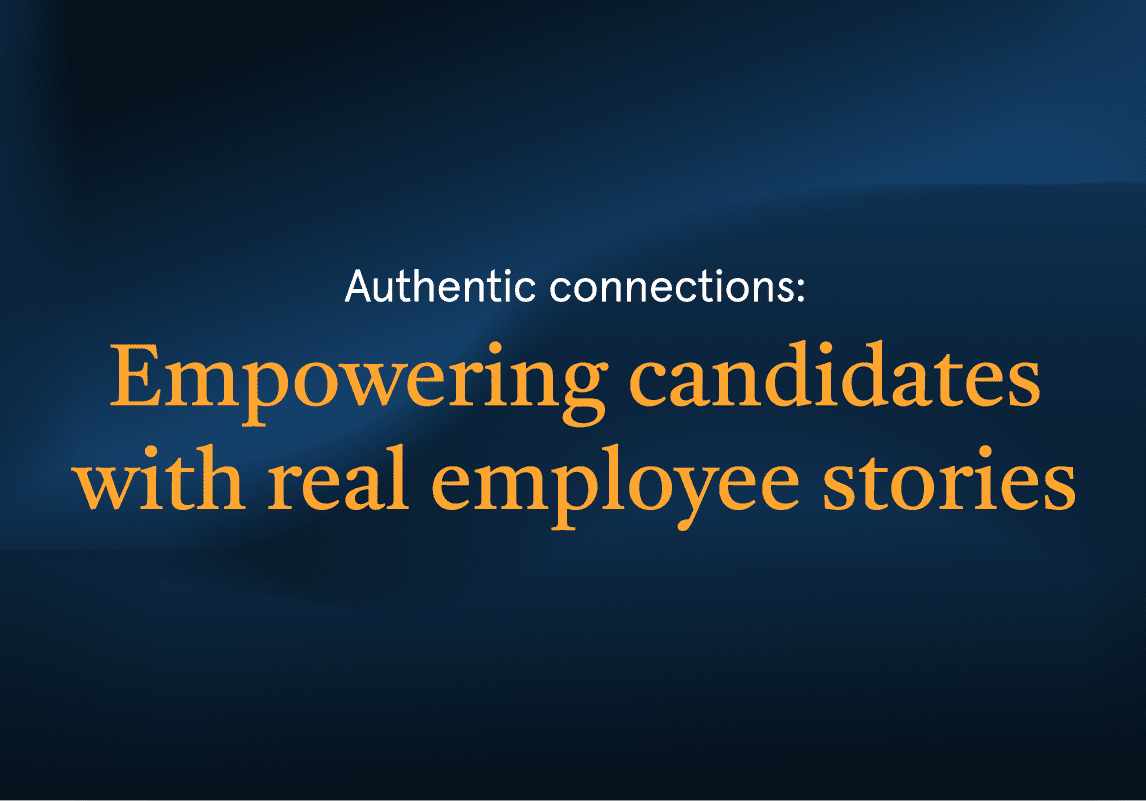How did you find your way into TA, what’s your story?
Like most people, I don’t think I grew up dreaming I would work in HR. I was approached by Sprinklr, a social media software company with an opportunity to run their social recruiting. I was like, “Ok, you’re a social media company, and I’ve got a lot of experience with social media, but I’ve never done recruiting. I don’t know how to recruit. I don’t speak the language, what do you think? Is this still an opportunity worth pursuing?”
I spoke to their whole team —the recruiting director, HR— I came down to New York which is where they’re headquartered, and we just talked about the Sprinklr platform. We discussed how we could leverage it by putting a recruiting spin on what their marketing team was already doing with social media, basically using it for recruiting. I thought it was the coolest thing in the world!
Tell me more about that, your early years.
I started in Marketing when I was 12, consulting on social media. I went around speaking at different colleges, conferences and had my first internship at 16, focused on inbound marketing. Got to know and love it, but I started to feel that marketing was becoming saturated. I discovered social recruiting and said, “Wow, ok, here’s a new community that’s forming; these people are still new on their paths.” I went to a social recruiting strategies conference and got to meet some really cool folks who all supported me; they’re like “wow, ok, you’re really young!” — at the time I was 18. I found people who cheered me on a bit, were like “you should meet so-and-so,” talked to a bunch of people . . . this community is really special. You’re hooking someone up with a career, it’s not just a job, so there’s a lot of passion in this field. I love it.
What works best to engage and nurture candidates?
It really all starts with heart. This is about life, everyone is finding their path, finding their way into a company, and how do you show heart? It’s all through story. Telling a good story that goes beyond, “why are you here, why are you doing this?” What is it actually like? Who are the people you’re working with? It’s way more than the perks, more than compensation and everything, it’s actually, real-life stories. Putting that with relevant content is how you tell those stories, so finding a good channel that is going to target the right candidate. Most candidates think that HR is very transactional, so you want to make sure that your story doesn’t sound that way. It’s got to be personal, needs to be human, and can’t be automated. It’s really important. I think it all starts with that custom personalization and it’s something that a lot of recruiters still forget because they’re so concerned about volume. You need to still maintain that touch.
How about passive prospects?
For passives, I advocate for profiling and tracking. If you’ve got data on your website where you can see some of their demographics, some browsing history, actions they’ve taken, even their location, you could do a lot with that. You could personalize their web experience; when they come to your career page, show them jobs that are relevant to that location, or relevant to the pages that they’ve looked at on your website. That’s just smart personalization —taking a look at what they’ve already done.
Facebook ad posts are another great method. You’re getting candidates where they are already. You’re not necessarily making them come to your website, they’re already in their Facebook feed. Having an ad that takes them to a relevant page, one that’s not a job but a creative landing page, perhaps customized, personalized, is just smart. It enhances their experience and makes them feel like, “Ok, this company actually put something together that’s not general, that’s not a one-size fits all, it looks like it’s made for me.
What’s one of your most favorite campaigns?
At TripAdvisor, I spent a summer interviewing employees from each team within the company. I wanted to paint the full picture of what it’s like to work there. It was a face-to-face conversation and very personal. I turned these into a short Q&A spotlight post. I chose Tumblr because it was sort of a younger, newer platform, and a good fit for the younger talent we were after. Employees loved sharing these stories with their families, friends, and on their own social networks, so now we were getting employees as ambassadors. They had a piece of content that they could say, ‘Hey, this is me, this is what I do at work, why don’t you consider applying, too?” So it was leveraging referrals and it worked out really well. The TA team loved it because now our recruiters could share this with candidates who were also curious about what it was like to be an engineer? It was a big deal.
How do you get your company to stand out?
You want to figure out a candidate’s needs, wants, interests, to profile what that ideal candidate would look like. That’s what I call a persona, which a lot of people talk about in marketing. So think of that persona that your hiring managers or recruiters would want. You could have one for each department, and think of a type of persona that might fit some roles within that team. Now flip it around and figure out where they are online or what channels they’re using, what type of content they want to read and see, and actually talk and appeal to those interests. This approach helps to really target them better — a lot better. I think personas are really key and something that marketing is already doing, so if you’re in HR and you tell Marketing, hey, we’re using personas, they’ll be like, “that’s the coolest thing ever; so are we!” So, that’s a really good place to start, and something that you can do to get your company to stand out.
What’s the secret to converting great prospects into candidates?
It starts internally with your employees and what they stand for and what they’re like, and spreads externally – one leads to the other. Think of Zappos for example. Zappos is a great story. They’ve got a book called, “Delivering Happiness,’ and they’ve got a very weird culture; they’re known for being weird. They’ve tested out “holacracy” which is the idea of not having managers, they’ve tested out not having job requisitions on the front end visible to candidates, and they’ve got that weird culture that they’re known for. Their employees feel happy, their employees are empowered to be themselves and that spreads to customers, because customers are like, wow, I’m having a great experience; these employees truly care, they’re happy when I get on the phone with them and they’ll do anything to help. So, really, it starts from within and spreads to the outside.


